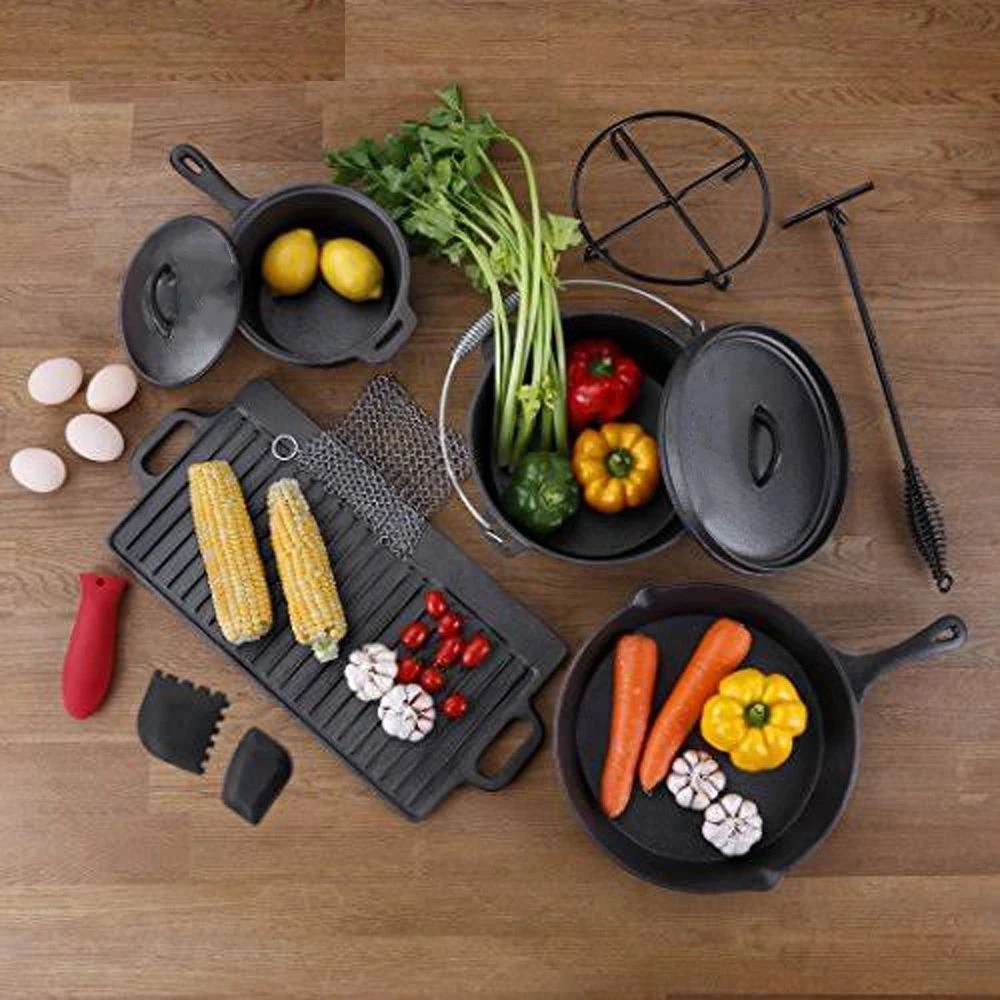
seasoning cast iron
The Art of Seasoning Cast Iron A Timeless Craft
Cast iron cookware has long been cherished for its durability and exceptional heat retention, but to truly unlock its potential, one must master the art of seasoning. Seasoning isn’t just a method of creating a non-stick surface; it’s an essential process that transforms raw cast iron into a versatile, culinary tool that enhances the flavor of food.
What is Seasoning?
At its core, seasoning is the process of applying a layer of fat to the surface of cast iron cookware and heating it, allowing the fat to polymerize and form a durable, non-stick coating. This protective layer not only prevents rust but also improves the cooking surface’s ability to conduct heat evenly. The seasoning process creates a natural patina that can improve with each use, making it a unique and personal addition to any kitchen.
The Importance of Seasoning
Seasoning cast iron serves several critical functions. First, it provides a non-stick surface that makes cooking and cleaning easier. A well-seasoned skillet can rival even the best non-stick pans when it comes to releasing food. Second, it protects the cookware from moisture and oxidation, which can lead to rust. Third, seasoning enhances the flavor of your food. The oils and fats used during the seasoning process bond with the iron, and over time, they create a complex flavor profile that enriches dishes cooked in the skillet.
How to Season Cast Iron
Seasoning cast iron is a simple yet rewarding process. Here’s a step-by-step guide
1. Clean the Cookware If your cast iron is new or has residual rust, start by scrubbing it with warm, soapy water. Use fine steel wool or a stiff brush for stubborn spots. Rinse it thoroughly and dry it completely with a towel.
seasoning cast iron

2. Apply Oil Choose a cooking oil with a high smoke point, such as flaxseed oil, grapeseed oil, or vegetable oil. Pour a small amount onto the surface of the skillet and use a lint-free cloth or paper towel to spread it evenly over the entire surface, including the handle.
3. Remove Excess Oil It’s vital to wipe away any excess oil to prevent a sticky residue. The skillet should appear shiny but not greasy.
4. Bake the Skillet Preheat your oven to around 450°F (232°C). Place the skillet upside down on the top rack of the oven to catch any drips. You can place a baking sheet on the lower rack to catch any oil drips. Bake for about an hour to allow the oil to polymerize properly.
5. Cool Down After an hour, turn off the oven and let the skillet cool inside. This gradual cooling process helps to set the seasoning.
6. Repeat For optimal results, repeat the oiling and baking process two to three times to build a stronger, more effective seasoning.
Maintaining your Seasoning
Once your cast iron is seasoned, it’s essential to maintain it. Clean the cookware with hot water and a brush—avoid soap, as it can break down the seasoning. After each use, dry it thoroughly and apply a light layer of oil to keep the seasoning intact.
Final Thoughts
Seasoning cast iron cookware is an art form steeped in tradition. By taking the time to properly season and maintain your cast iron, you ensure that it will serve you well for generations. This simple yet effective process not only enhances the performance of your cookware but also adds a layer of history and personality to your culinary adventures. Embrace this timeless craft, and let your cast iron skillet become a cherished companion in your kitchen.
-
Season Cast Iron Perfectly with GPT-4 Turbo TipsNewsAug.01,2025
-
High Quality Cast Iron Cookware - Baixiang County Zhongda MachineryNewsAug.01,2025
-
Premium Cast Iron Pan: Durable & Perfect HeatNewsAug.01,2025
-
High Quality Kitchen Durable Black Round Cast Iron Cookware Pancake Crepe Pan-Baixiang County Zhongda Machinery Manufacturing Co., Ltd.NewsAug.01,2025
-
Cast Iron Cookware - Baixiang County Zhongda Machinery | Nonstick, Heat ResistanceNewsAug.01,2025
-
High Quality Kitchen Durable Black Round Cast Iron Cookware - Baixiang County Zhongda Machinery | Non-Stick, Heat Retention, DurableNewsJul.31,2025


